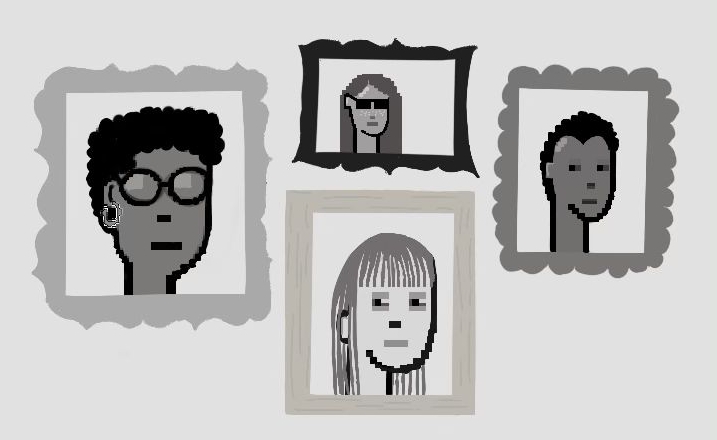$69 million. That is how much renowned American digital artist Mike Winkelmann earned from selling his NFT, or non-fungible token. Upon reading this news, Palo Alto High School senior Ziv Weissman decided to learn about and create NFTs, a decision that would later have a profound impact on his life. Weissman is one of several Paly students who have taken it upon themselves to explore the potential and possibilities of cryptocurrencies and NFTs.
Decrypting crypto
A cryptocurrency is a digital asset secured by cryptography, making it nearly impossible to counterfeit or double-spend. The technology that underlies crypto is called blockchain, a digital receipt of duplicated transactions and distributed across systems of computer networks around the world.
“Blockchain is mostly used to facilitate cryptocurrency transactions,” Weissman said. “This means that you can make transactions without having to go through a central authority, which in theory, results in quicker transactions and lower fees.”
Each block in the chain contains many transactions, and every time a new one occurs, a record of that transaction is added to every participant’s ledger.
Cryptic activities
Andrew Pham, a freshman at Foothill College and Paly class of 2021 alumnus, is a member of a group of students that mines Ethereum, a popular cryptocurrency. Mining is performed using sophisticated hardware that solves complex computational math problems in order to complete a block of verified transactions.
“I had some extra graphics cards that I could make money from, so it was nice to have some form of passive income,” Pham said.
This is because every time a transaction is verified, the rewarded cryptocurrency tokens are split among members of the mining group that contribute money to maintaining the hardware.
Navigating NFTs
NFTs are unique, irreplaceable digital assets that are verified and stored using blockchain technology. They represent a range of real-world objects such as music, in-game items and videos, though the current craze revolves around digital artwork.
While digital files can be quickly and endlessly duplicated, with NFTs, artworks can be “tokenized” to create a digital certificate of ownership that can be bought and sold.
Because of this, many people joke that NFTs are worthless simply because you can copy the original by taking a picture. Weissman uses modern art as an analogy to the value of NFTs.
“NFTs allow people who own them to come together over their love and passion for or emotional connection to these pieces of art that they chose to buy and socialize in a whole new form of interaction.”
— Ziv Weissman, senior
“Sometimes you have no idea why modern art is so valuable because you don’t see the value in it,” Weissman said.
Weissman emphasizes that there is a difference between owning an NFT and being able to look at a copy of it by describing an upcoming NFT collection, known as “Angry Apes.”
“They’re only selling 8,888 of these Angry Ape NFTs,” Weissman said. “When you own this NFT of the ape, you’re also gonna be able to play with it in some NFT gamification, something you can’t do if you don’t own it.”
Weissman’s interest in NFTs has also prompted him to create his own digital art.
“On Open Source, a program used for NFT creation, I am generating a script to generate 1,000 variations of a certain piece of art I created,” Weissman said. “After I create this NFT collection, I can publish it on the NFT marketplace Open Seas, which allows others to see and buy it.”
Weissman sees NFTs as more than just a form of digital art that can be purchased.
“NFTs allow people who own them to come together over their love and passion for or emotional connection to these pieces of art that they chose to buy and socialize in a whole new form of interaction,” Weissman said.



